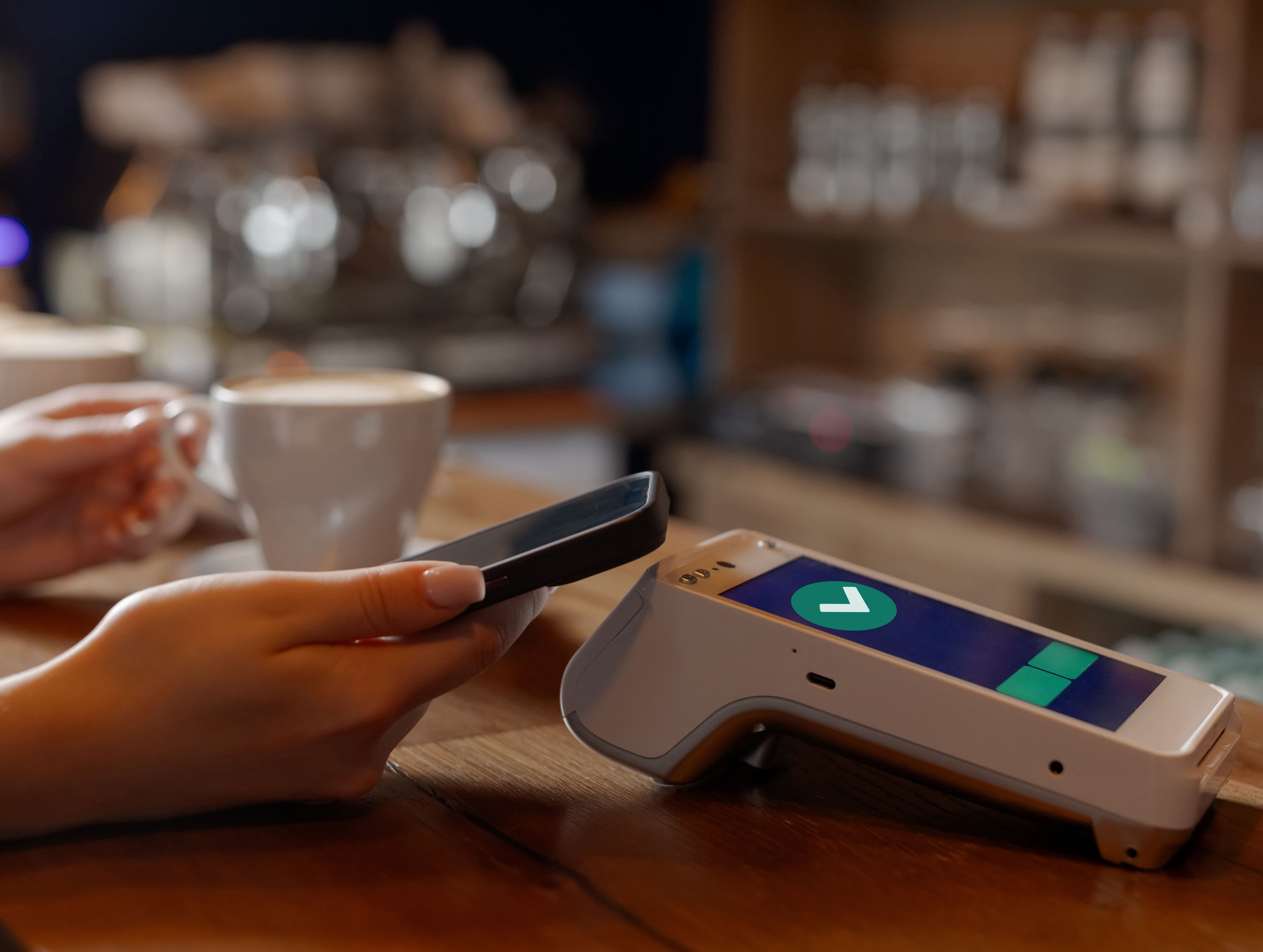MOBILE PAYMENT
Mobile payment has established itself as one of the fastest growing payment methods in Spain, currently accounting for 39% of face-to-face card payments.
Mobile Payment Revolution in Spain
Mobile payment has established itself as one of the fastest growing payment methods in Spain, currently accounting for 39% of face-to-face card payments.
According to the projections in our Means of Payment Trends Report 2024, this figure is expected to reach half by 2027, demonstrating exponential growth with a CAGR of over 21%.
The expansion of mobile payment
The use of mobile payments is becoming increasingly common in the daily lives of Spanish consumers. According to data from the Banco de España, 25.4% of the population has mobile payment applications, with penetration being higher in younger groups, reaching 55% among those under 25 years of age, and decreasing by age group to 5.4% among those over 65 years of age.
The triumph of contactless mobile payment becomes even more unquestionable if we analyse the year-on-year evolution of its transaction rate. The growth of its operations over the last few years has led to year-on-year growth of close to 70%. If the 2023 Redsys report mentioned that mobile payments accounted for 17% of face-to-face card payments, the figure is currently around 39%.
This growth in the adoption of mobile payment is no coincidence, as it responds to the convenience, speed and security offered by these solutions. The bank card remains the underlying instrument in these applications, but the way it is used is evolving. Among contactless mobile payment users, contactless is already the preferred method for face-to-face purchases as opposed to the physical card, consolidating its adoption in the market.
The use of mobile payments varies according to the sector of activity. In 2023, restaurants and large enterprises accounted for more than half of smart device payments.
A comparison of the proportion of mobile payments compared to physical card payments in each sector shows that “Travel & Entertainment” and “Restaurants”, are the activities where the use of smartphone to make purchases is most widespread, with around 4 out of 10 payments being made via mobile wallets

Wallets and market competition
The battle between the different mobile payment applications dates back to just under a decade ago, during which multiple initiatives promoted by different players have emerged. The wallets of Financial Entities, which were pioneers in providing contactless mobile payment in Spain in 2015, were followed by proposals from Telcos, xPays and different players, all fighting for a place in the consumer's preference as a payment alternative.
While the initial battle was highly competitive and with a wide range of alternatives, over time the solutions offered by the Telcos disappeared and some wallets provided by Financial Entities have been discontinued in favour of alternatives such as Google Wallet.
According to the Redsys 2024 Market Study, Google Wallet is the application with the largest user base, followed by bank wallets and Apple Pay. However, in terms of frequency of use, Apple Pay leads the market, accounting for the majority of transactions.
80% of users who are familiar with Apple Pay have this solution, compared to 46% of Android users who have Google Wallet.
The recent opening of its NFC antenna following the entry into force of the DMA - Digital Markets Act, gives free rein to the introduction of contactless mobile payment solutions for iOS, which until now was limited exclusively to Apple Pay.
Towards a digitised economy
Mobile payment in Spain is undergoing an accelerated transformation. With continued growth and the expectation that by 2027 it will account for half of all face-to-face card payments, the market will continue to evolve. Competition between wallets and growing acceptance in different sectors will continue to influence the future of digital payments.
As the digitisation of commerce and consumer behaviour continue to evolve, mobile payment solutions will need to continue to innovate to meet the needs of an increasingly dynamic and digitised market.